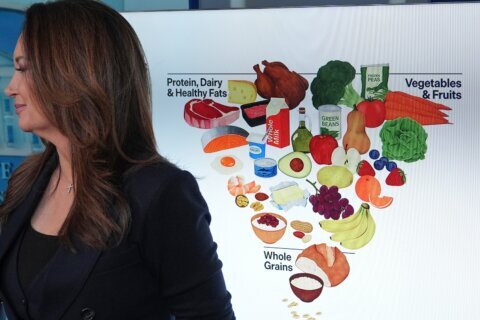Certain physical changes are an inevitable part of the aging process, like wrinkles and graying hair. Unfortunately, loss of muscle strength, balance, coordination and flexibility are on that list as well, and these physiological changes often begin when we’re in our 50s.
Fortunately, these reductions in physical fitness can be delayed, mitigated or even reversed through the performance of a consistent physical-activity program. While the earlier you start the better, it’s never too late to get moving. And a well-designed program can have profound effect on health, fitness and overall wellness as one grows older.
A well-rounded exercise program targets endurance, strength, balance and agility — and should have a direct correlation to the activities you perform in your daily life.
[SEE: The 6 Best Exercises for Preventing Falls in Older Adults.]
Aerobic exercise
Any program should begin with 150 minutes of moderate-intensity aerobic exercise.
These can include:
— Walking briskly.
— Jogging.
— Using a cardio machine.
— Biking.
— Swimming.
— Dancing.
To test whether an exercise is “moderate,” try talking as you work out. You should be able to talk, but not sing. If you can sing, the workout is too easy; if you can’t talk, it’s too intense.
One more note: Many people find that 150 number pretty intimidating, but it breaks down to 30 minutes of exercise five days per week. So, a brisk 15-minute walk after lunch and another after dinner is enough to yield important health benefits.
It’s also essential that women over 50 focus on maintaining, or better yet, increasing their muscular strength and flexibility, especially in the lower body. Improved lower-body strength directly impacts walking speed, balance and fall prevention, all of which are critical as we move into our 60s and beyond.
[SEE: Starting Yoga in Your 50s.]
Strength training
In addition to targeting the legs (glutes, quads, hamstrings and calves), a whole-body strength-training regimen should target the chest, back, shoulders, biceps, triceps and core. Begin by performing one set of eight to 15 repetitions twice a week, then slowly progress to two or three sets during each workout.
Don’t worry if these cardio and strength guidelines seem out of reach at the moment. The key is to get started. If you have to begin with five-minute walks and slowly build your stamina until you can reach that weekly 150 minutes goal, that’s perfectly fine.
When it comes to the strength-training component, you can start with light weights or body-weight exercises, as long as you target each muscle group. Depending on the specific exercise movement, you can start with weights as low a few pounds and gradually increase. The goal is to find a weight that you can perform at least 8 repetitions but not more than 15. Adhere to the mantra of “start low and go slow.”
[Read: Easy At-Home Ab Workouts for Women.]
Flexibility
Finally, don’t neglect flexibility training. Daily light stretching can help maintain flexibility and range of motion in your joints. Yoga and Pilates are great choices, as they not only enhance flexibility, but also core strength, balance, stability and overall mobility.
Exercise, no matter the type or intensity, has countless benefits, from improving balance and decreasing the risk of heart disease, diabetes, and other chronic conditions to reducing the symptoms of depression and expanding your social circle. Just get moving as often as you can and find an activity or two that you enjoy. Having fun will exponentially increase the likelihood you’ll stick with the program over the long haul.
More from U.S. News
Exercise Equipment for Seniors
7 Exercises You Can Do Now to Save Your Knees Later
10 Tips for Promoting a Healthy Bladder
The Best Workout Programs for Women Over 50 originally appeared on usnews.com







